Public art terms you should know
Calls for artists. Placemaking. Commissioned artwork. Request for qualifications. Fabrication. We got you covered for common public art terms to help you navigate the public art process.
Whether you’re an emerging artist or a project manager coordinating an artistic installation for the first time, we know there are lots of industry words that are not part of your daily vocabulary.
As you work more closely with artists and explore the possibilities that public art has to offer to achieve your artistic goals, getting familiar with public art terms will help you stay knowledgeable about the public art process. These terms also reveal common elements in public art and can help you plan effective concepts, applications, and approaches for your next personal or professional project.
As public art is constantly evolving, we’ll update this glossary of public art terms regularly with new words, updated definitions, and public art examples.
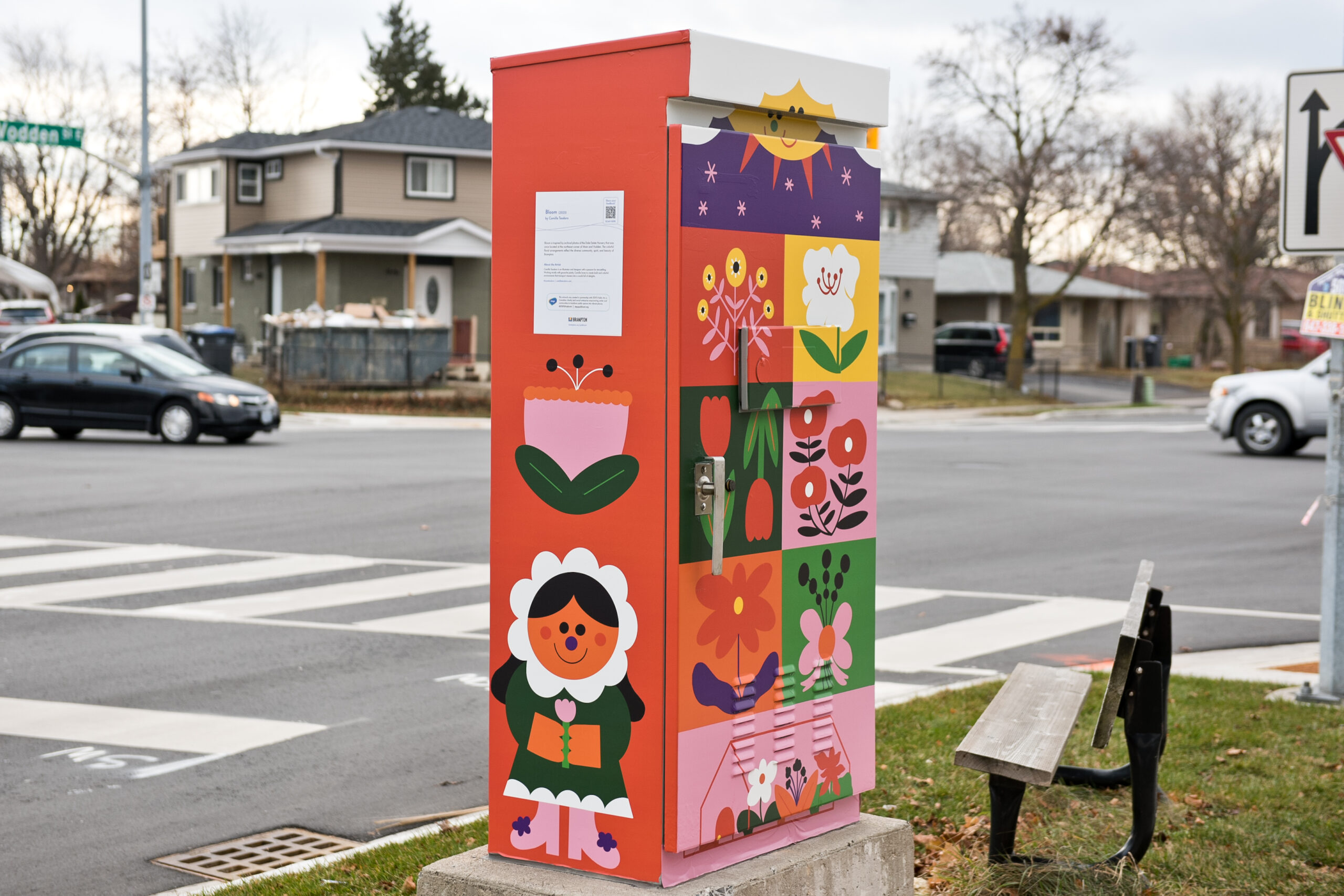
Brampton BOXED where artist Camilla Teodoro was one of 10 artists selected through the Call for Artists
Photo credit: Herman Custodio
What is public art?
Public art is art in any media whose form, function and meaning are created for and in the public realm. It is a specific art genre with its own professional and critical discourse, and takes place in many forms (Wikipedia).
Association for Public Art elaborates, “Public art is not an art “form”…What distinguishes public art is the unique association of how it is made, where it is, and what it means. Public art can express community values, enhance our environment, transform a landscape, heighten our awareness, or question our assumptions. Placed in public sites, this art is there for everyone, a form of collective community expression.”
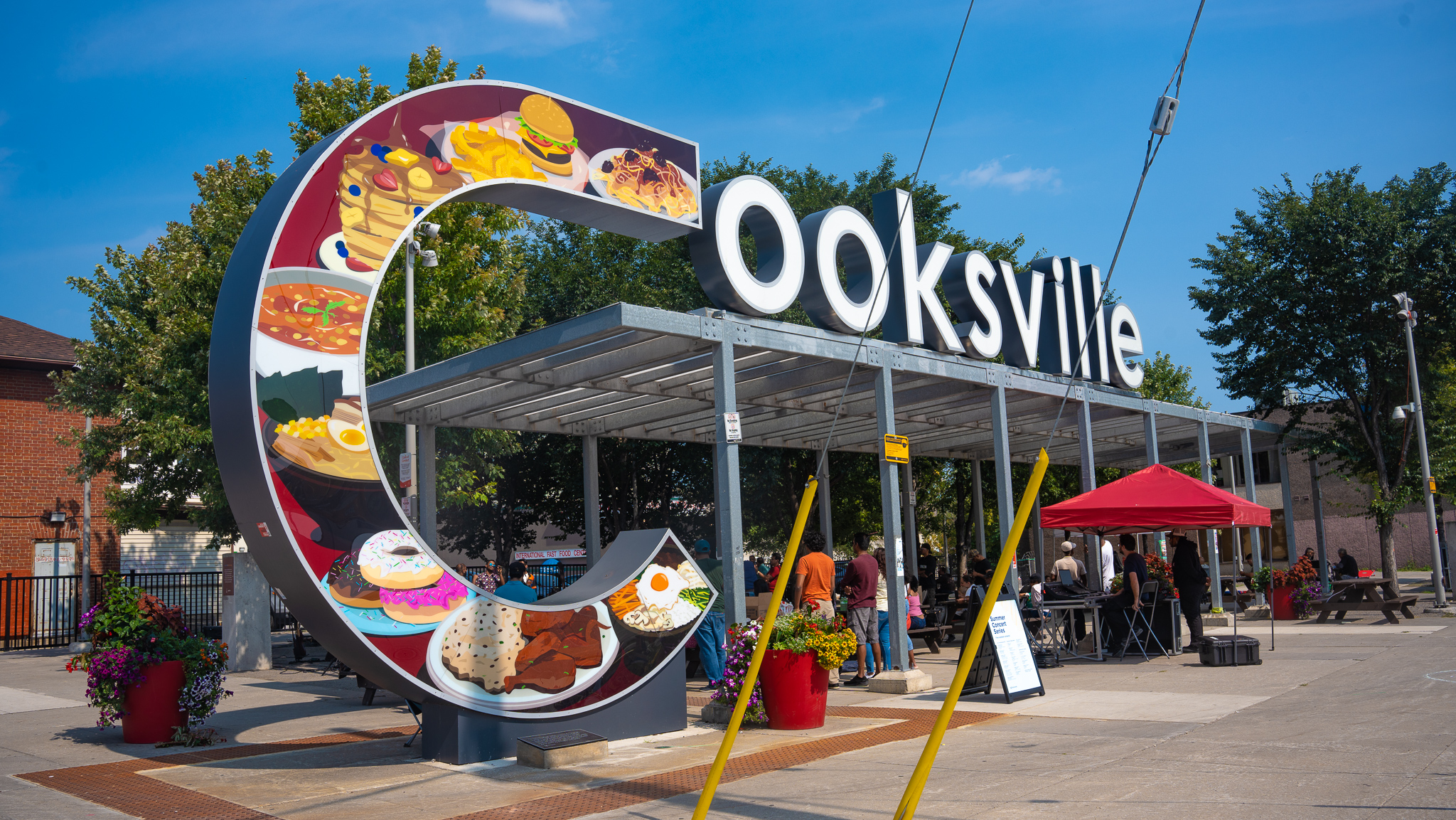
Cooksville: Our Food Stories where artist Ashley Mozo created public artwork for the Cooksville sign representative of the various cuisines found in the area
Photo credit: Alicia Reid
Now that we’ve covered the general definition of public art, let’s dive into other public art terms (in alphabetical order with references linked).
This isn’t an exhaustive list but just a starting point! Let us know if there are terms that should be included–we’d love to hear from you to share the knowledge.
(A) Public art terms
Accessibility: According to the BC Arts Council, “The ability for all to make use of information, enter, and participate fully in various environments and activities.”
Artists’ fees: According to the Manitoba Arts Council, “Compensation paid to artists for their work or for the use of their work.”
Artist-in-residence: Opportunities for artists to work in schools, organizations or institutions to engage with the community and work on projects, events, programs, etc.
FARSH 2 by CreateSpace artist-in-residence Roda Medhat
Video credit: Sofia Habib
Art-washing: According to the Metropolitan Area Planning Council, “The use of art and the presence of artists and creative workers to add value to commercial development and make redevelopment more palatable to residents.”
(B) Public art terms
Budget: A budget lays out the costs of a project by item and often includes administration costs, artist fees, engineering fees (and other specialized consultation fees), materials, fabrication, studio costs, insurance, general sales tax, artwork transportation and installation fees, and contingency amount to account for any surprise costs (usually 10% of the total budget).
Built environment: According to the Metropolitan Area Planning Council, “This is a broad term to describe the world created by humans, as opposed to nature. It most often pertains to the constructed or altered natural features of our daily lives, such as buildings, plazas, roadways, bridges, etc.”
Business improvement areas (BIAs): A group of businesses in a defined area that collaborate on local improvements to promote business in that area (often with the local municipality).
The I HeART Main Street Program has provided public art and placemaking support to BIAs across Canada since 2020
Video credit: Alicia Reid
(C) Public art terms
Calls for artists: A Calls for Artists is a document that describes a public art opportunity and invites artists or artist teams to apply for the project. There are three main types of public art calls: Requests For Qualifications (RFQ), Requests For Proposals (RFP), and Expressions Of Interest (EOI).
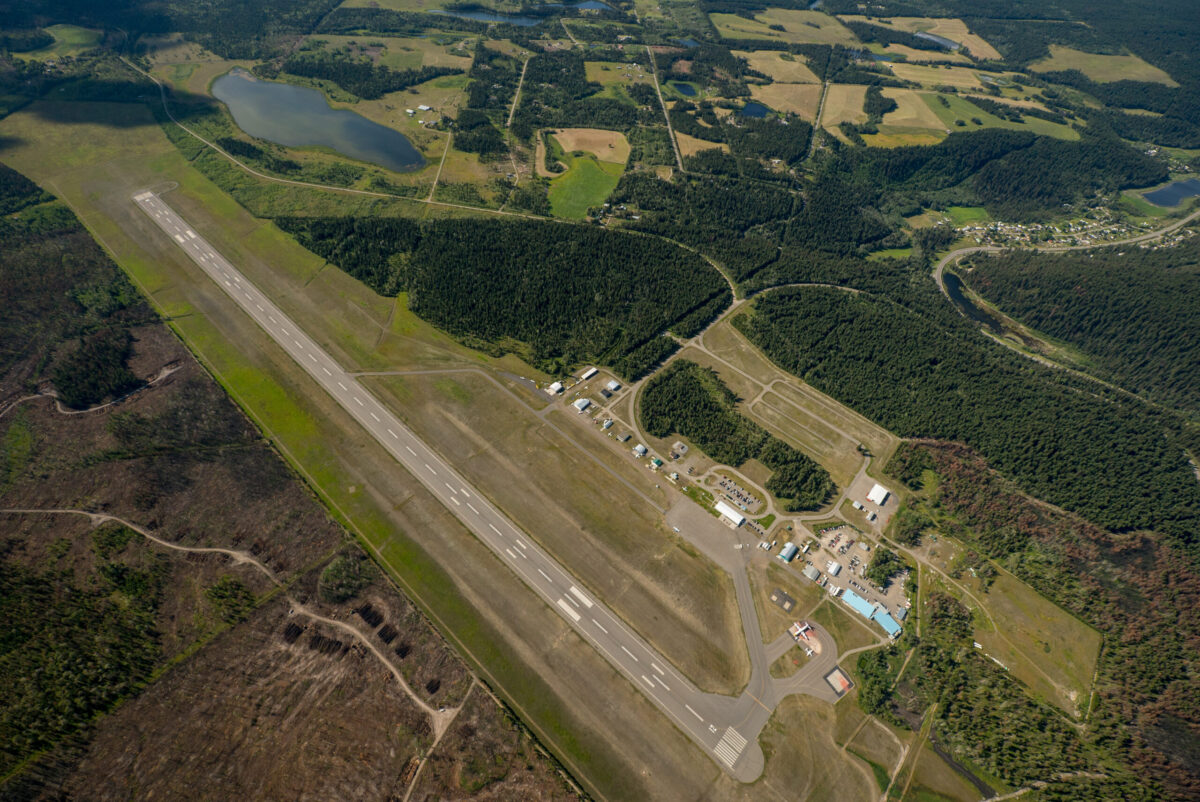
The Williams Lake Regional Airport Public Art Competition is a Calls for Artists example by Xatśūll First Nation and Williams Lake First Nation
Photo credit: City of Williams Lake
Capacity building: A program intended to support emerging artists to develop skills and experience in their field.
Cultural planning: According to the Metropolitan Area Planning Council, “A government-led process for identifying and leveraging a community’s cultural resources, strengthening the management of those resources, and integrating cultural resources across all facets of local government planning and decision making. Cultural planning is part of an integrated, place-based approach to planning.”
Commissioned artwork: An artwork made at the request of an individual or organization, funded by that individual or organization.
Community consultation: A gathering to share project information and collect local insights and knowledge to inform and inspire the final artwork. Examples of community consultations include pop-up info booths, scheduled meetings, surveys and feedback forms, and neighbourhood flyering or canvasing.
Community engagement: According to the Metropolitan Area Planning Council, “The process of using multiple strategies to provide opportunities for all to be informed and to participate in public decision-making.”
Community open house: Artist proposals are generally shown in at least one public community open house near the site (or virtually). Community member comments are shared with the artists and the selection panel.
Community partners: Partnerships with Business Improvement Areas (BIAs), community and social service agencies, local arts organizations, politicians, libraries and schools, and other community groups.
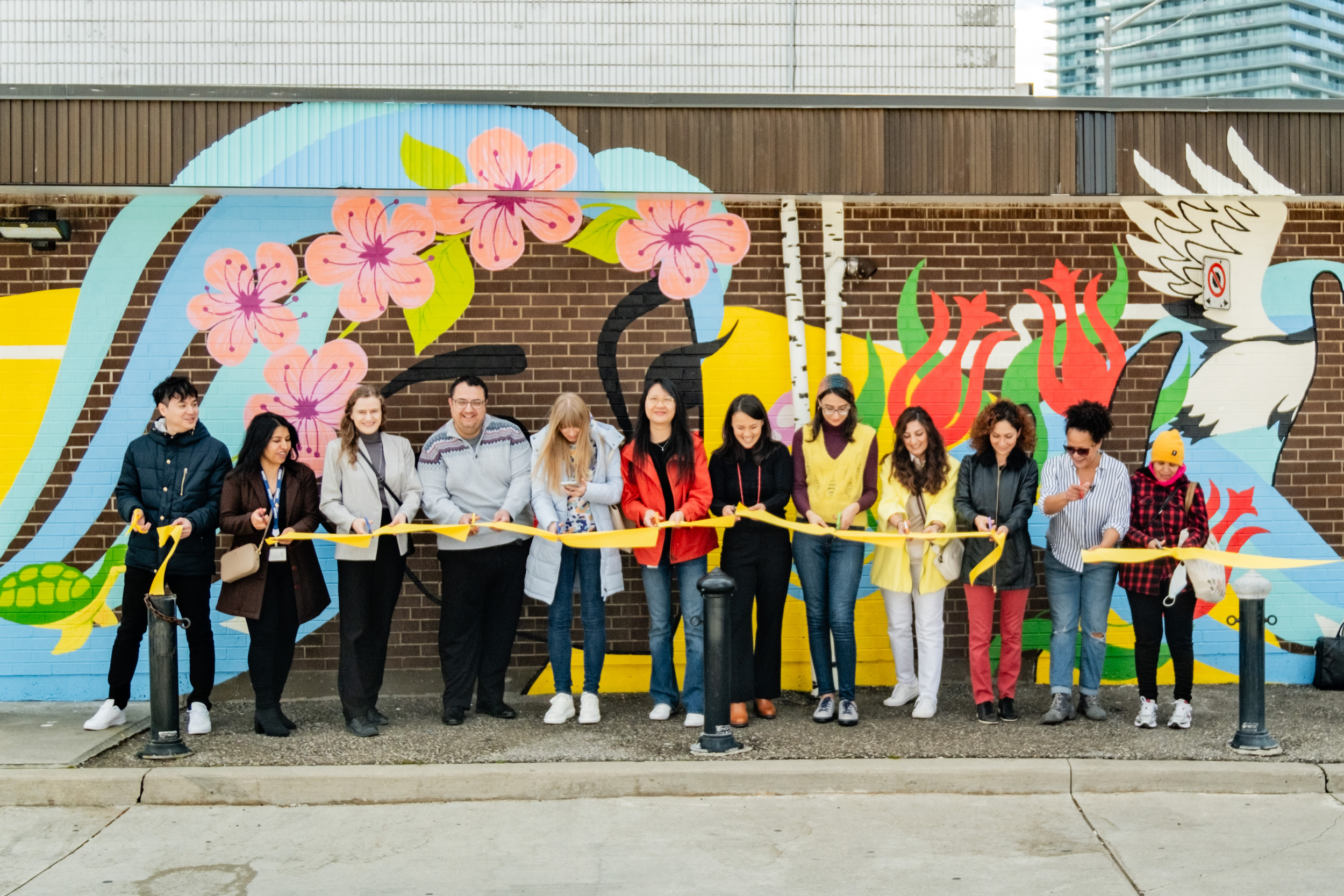
A mural celebration for Crossroads that was supported by the Toronto Transit Commission (TTC), Ward 18 Councillor Lily Cheng, North York Arts, and Yonge North York BIA
Photo credit: Jae Yang
Conflict of interest: According to the Manitoba Arts Council, “A situation in which a nominator or an assessor could benefit from an assessment decision, whether that decision is to award or decline. This benefit may be personal, professional, or financial.”
Copyright: According to the Manitoba Arts Council, “The exclusive right to copy a creative work or to license others to copy a creative work; may include the right to publish, produce, reproduce, perform, translate, rent, etc.”
Curriculum vitae (CV): A written summary of your experience, past projects, education, qualifications, awards, etc.
(D) Public art terms
Decommissioning: According to the Wiltshire Council, “the dismantling or removal of an artwork.”
Design co-creation: A unique collaborative artistic process where artist facilitator(s), partners, and participants contribute to the contents of the final artwork. Examples include pop-up studios and community art workshops (online or in person).
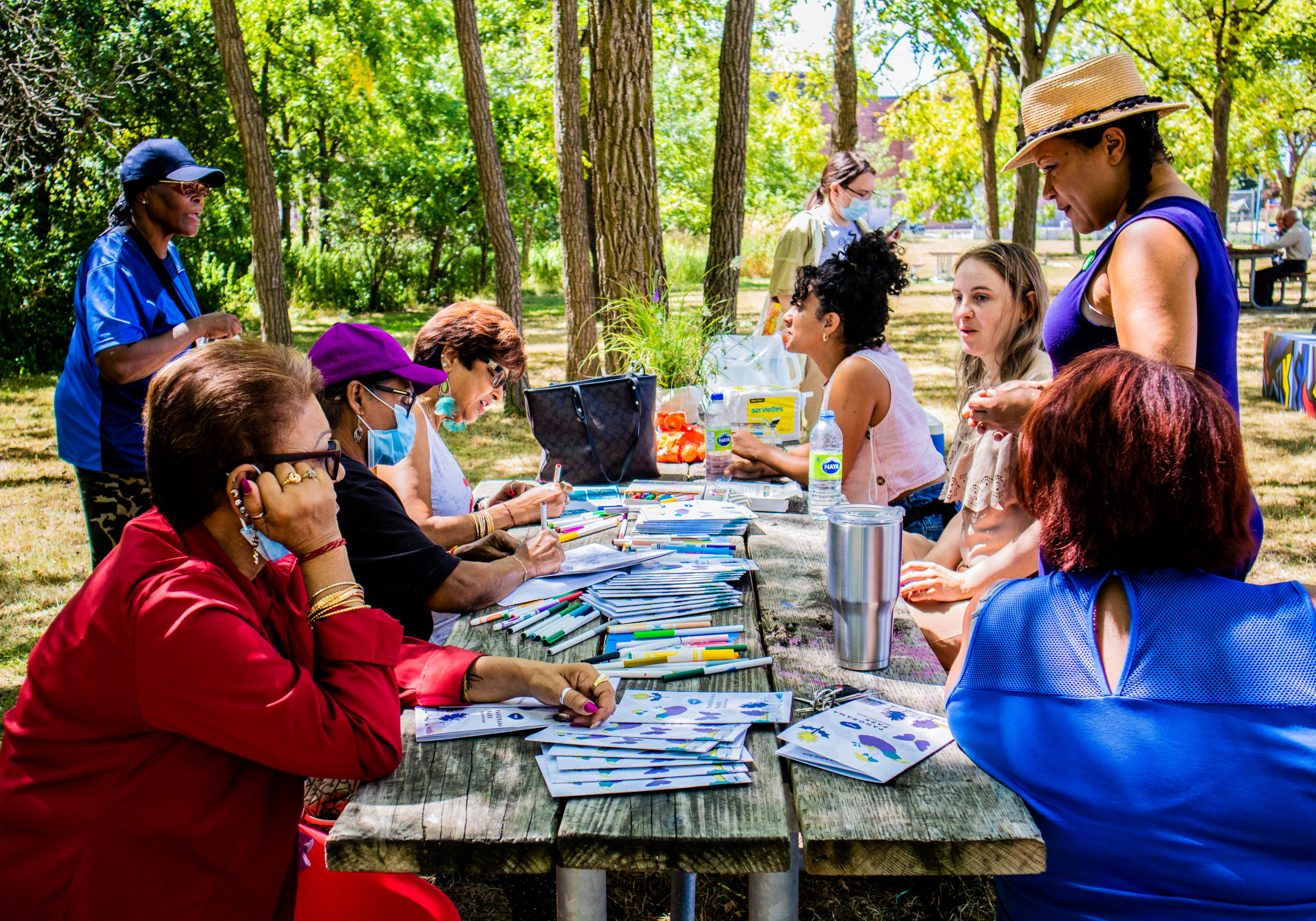
A community-engaged and co-creation session as part of the 2022 From Weeds We Grow programming
Photo credit: Selina McCallum
Diversity: According to the BC Arts Council, “The expression and recognition of a multiplicity of shared or individual traits and characteristics such as cultures, disabilities, ethnicities, experiences, expressions, gender identities and gender expressions, languages, nationalities, origins perspectives, or sexual orientations.”
(E) Public Art Terms
Ephemeral artworks: Artworks that are non-permanent, such as performances and temporary installations.
Flutter by Jose Macasinag was a temporary projection installation at the Sunalta Community Association public celebration with 100+ visitors
Video credit: Lavounie Doan
Equity-deserving (or equity-seeking) communities: According to the Canada Council for the Arts, “Communities that face significant collective challenges in participating in society. This marginalization could be created by attitudinal, historic, social and environmental barriers based on age, ethnicity, disability, economic status, gender, nationality, race, sexual orientation and transgender status, etc. Equity-seeking groups are those that identify barriers to equal access, opportunities and resources due to disadvantage and discrimination and actively seek social justice and reparation.”
Expression of interest (EOI): An Expression of Interest (like a Request for Qualifications) is a Call to Artists that usually consists of a two-stage competition process. In the first stage, applying artists are invited to submit some or all of the following for the selection panel’s consideration: A letter of intent, curriculum vitae (CV), and examples of previous work or a portfolio. A selection panel then shortlists a set number of artists who are invited to create proposals and are generally provided a fee for this work. The selection panel will then select a winning artist to award the contract to.
(F) Public art terms
Fabrication: Artwork fabrication is the process of producing art. It may involve the use of paint, metal, and/or other resources and processes such as cutting, bending, and assembling.
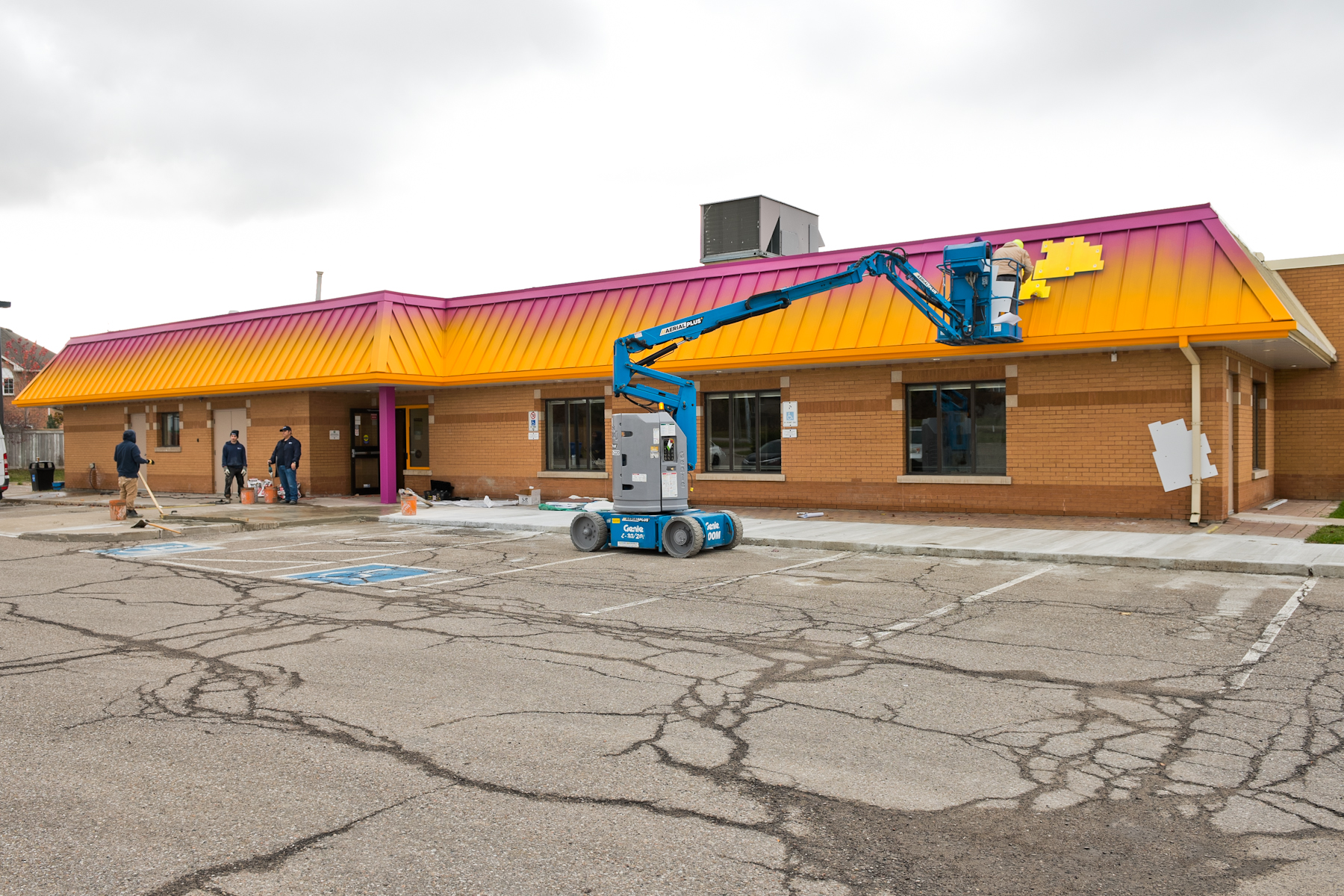
Fabrication of LeuWebb’s 3D installation (in collaboration with the City of Brampton and STEPS) at the Snelgrove Community Centre
Photo credit: Herman Custodio
(G) Public art terms
Gentrification: Refers to a particular type of neighbourhood change defined by an increase in housing costs and an influx of new, higher-income residents; often coincides with lower-income residents moving out of a neighbourhood due to rising housing costs.
Grant: Money provided by the government or another organization for a project or activity.
(H) Public art terms
Honorarium: According to the Manitoba Arts Council, “A payment for services rendered wherein no industry standard exists.”
(I) Public art terms
Inclusion: According to the BC Arts Council, “The act of creating environments in which any individual or group can be and feel welcomed, respected, represented, supported, and valued to fully participate.”
Installation artworks: Artworks where the art and the site are mutually embedded or connected.
Integrated artworks: Artworks that are integrated, or built into a facade, pavement or landscape, etc. of the site (e.g. reliefs, mosaics, digital lighting).
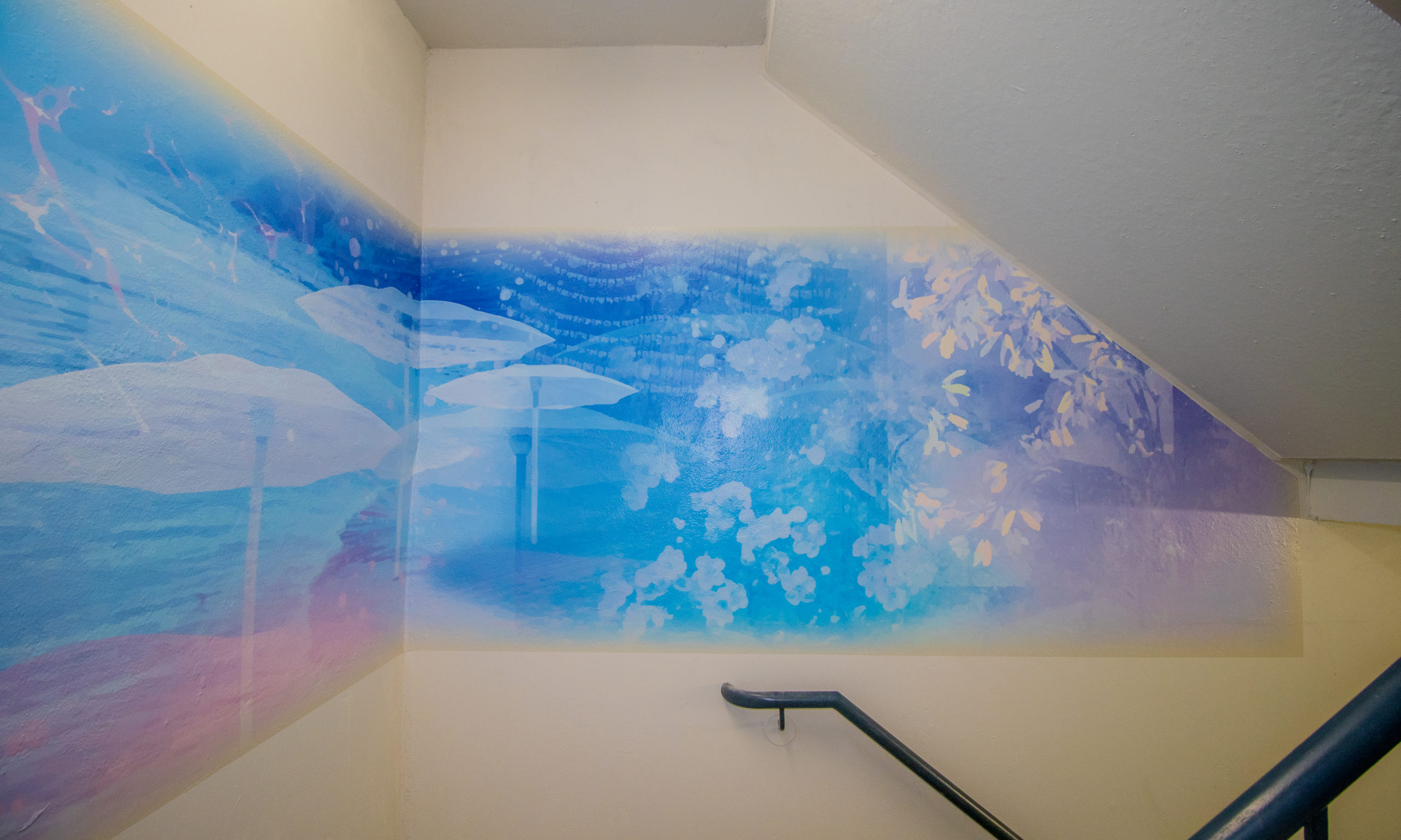
Lakeside is an interior work by Brianne Burnell integrated into the stairwell of Tridel’s Aquabella residential development
Photo credit: Selina McCallum
(J) Public art terms
(K) Public art terms
(L) Public art terms
Land art (or Earth art): Artworks that are made directly within the landscape, usually using natural materials from the site. These works are often documented through photography.
Letter of intent (or statement of interest): A short narrative, included in submissions to Calls for Artists, that explains why the applying artist would be well suited for the project. These letters can also highlight the artists’ specific interests or connections to the project.
Letter of reference: A letter written by a professional contact that expresses your strengths and capabilities to a potential employer, funder, selection panel, etc.
(M) Public art terms
Maintenance plan: A written document that explains how an artwork should be cleaned, maintained, and repaired during its lifetime.
Maquette: According to the Metropolitan Area Planning Council, “A scale model of a proposed project, often used to help selection panels visualize the final product. More recently, computer-aided design is utilized more frequently to adequately visualize proposed projects.”
Mentorship: A partnership where a more experienced artist or individual works with emerging artists to guide and support them in acquiring new skills and forming networks in their field.
Emerging artists Mike Hooves and Mary Annan were mentored by artist duo RAZA to create FL4RE at Centre 15 in Calgary, Alberta
Video credit: Lavounie Doan
Mixed-use: According to the Metropolitan Area Planning Council, “The practice of having more than one type of use in a structure or area.”
(N) Public art terms
(O) Public art terms
(P) Public art terms
Performance art: Artworks created through the actions of the artist and/or the audience. This can include live performances and recordings of performances.
Placekeeping: According to Evergreen, “A form of engagement that prioritizes ecological, historical and cultural relationships to, and the care of, place; and unsettles shared public spaces to bring the presence of Indigenous histories and futures into focus.”
Placemaking: Placemaking is an approach to reimagining and building public spaces for the communities that live, work, and play within them. This means creating more safe, healthy, accessible, and welcoming public spaces for community well-being. Creative placemaking incorporates arts and culture to revitalize public spaces, stimulate the economy, and encourage community participation to create spaces reflective of the diverse identities that use them.
Plop art: According to the Metropolitan Area Planning Council, a “Term coined in the 70s by artist James Wines – often used in a derogatory manner – to describe artwork created independently and without consideration for the environment in which it is sited.”
Professional Artist (as defined by the Canada Council for the Arts): “An artist who: has specialized training in the artistic field (not necessarily in academic institutions), is recognized as a professional by his or her peers (artists working in the same artistic tradition), is committed to devoting more time to artistic activity, if possible financially, and has a history of public presentation or publication.”
Project storytelling: A multimedia communications plan to document, archive, and share the collaborative process and partnerships of a project.
Public art: According to the Association for Public Art, “Public art is not an art “form”…What distinguishes public art is the unique association of how it is made, where it is, and what it means. Public art can express community values, enhance our environment, transform a landscape, heighten our awareness, or question our assumptions. Placed in public sites, this art is there for everyone, a form of collective community expression.”
Public space: A space that is open to the general public. Examples include parks, squares, streets, etc.
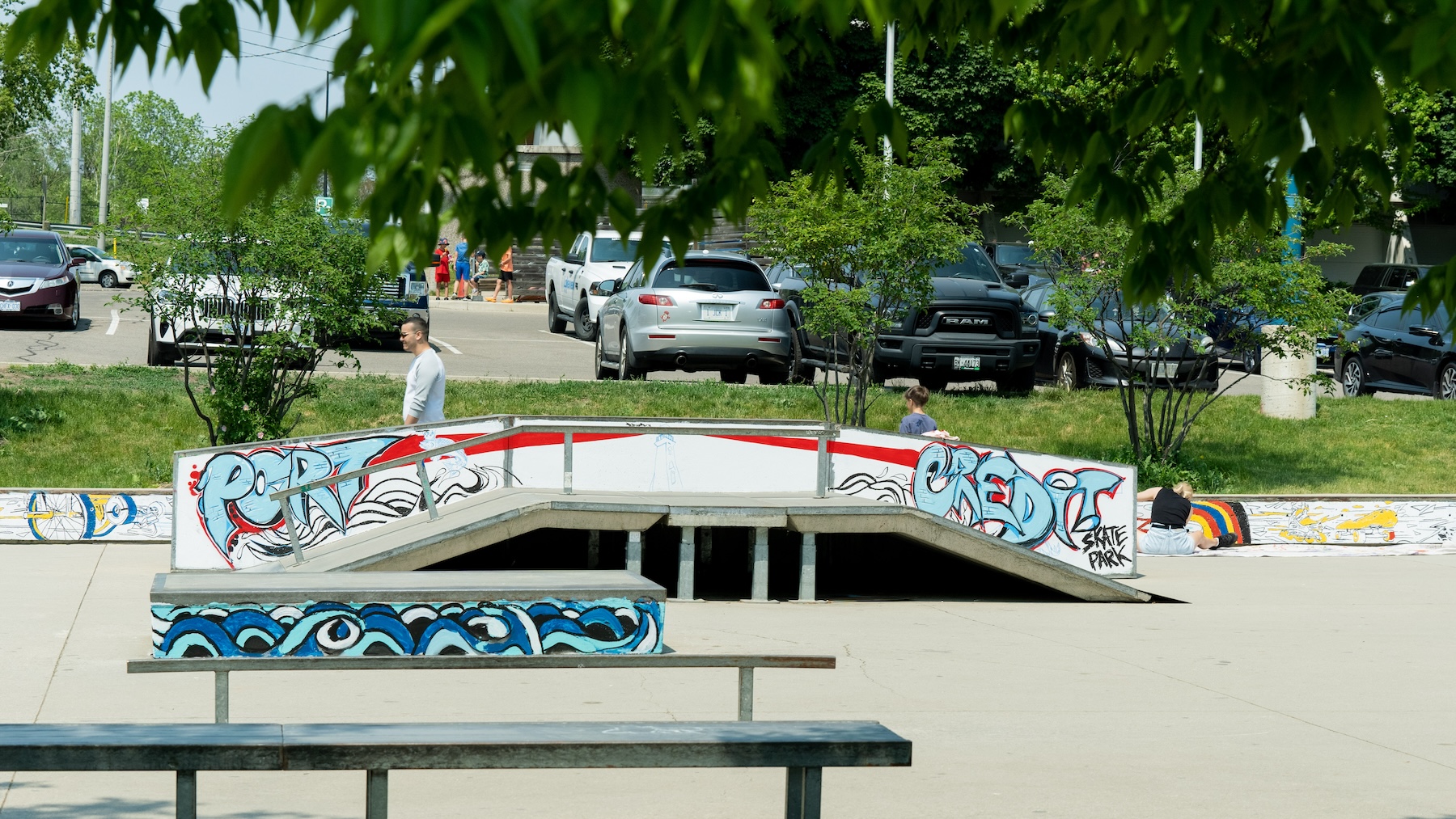
A paint jam led by Ray Vidal at a skatepark in Port Credit as part of Mississauga Movement
Photo credit: Anushay Sheikh
(Q) Public art terms
(R) Public art terms
Render: Rendering or image synthesis is the process of generating a photorealistic or non-photorealistic image from a 2D or 3D model by means of a computer program. The resulting image is referred to as the render.
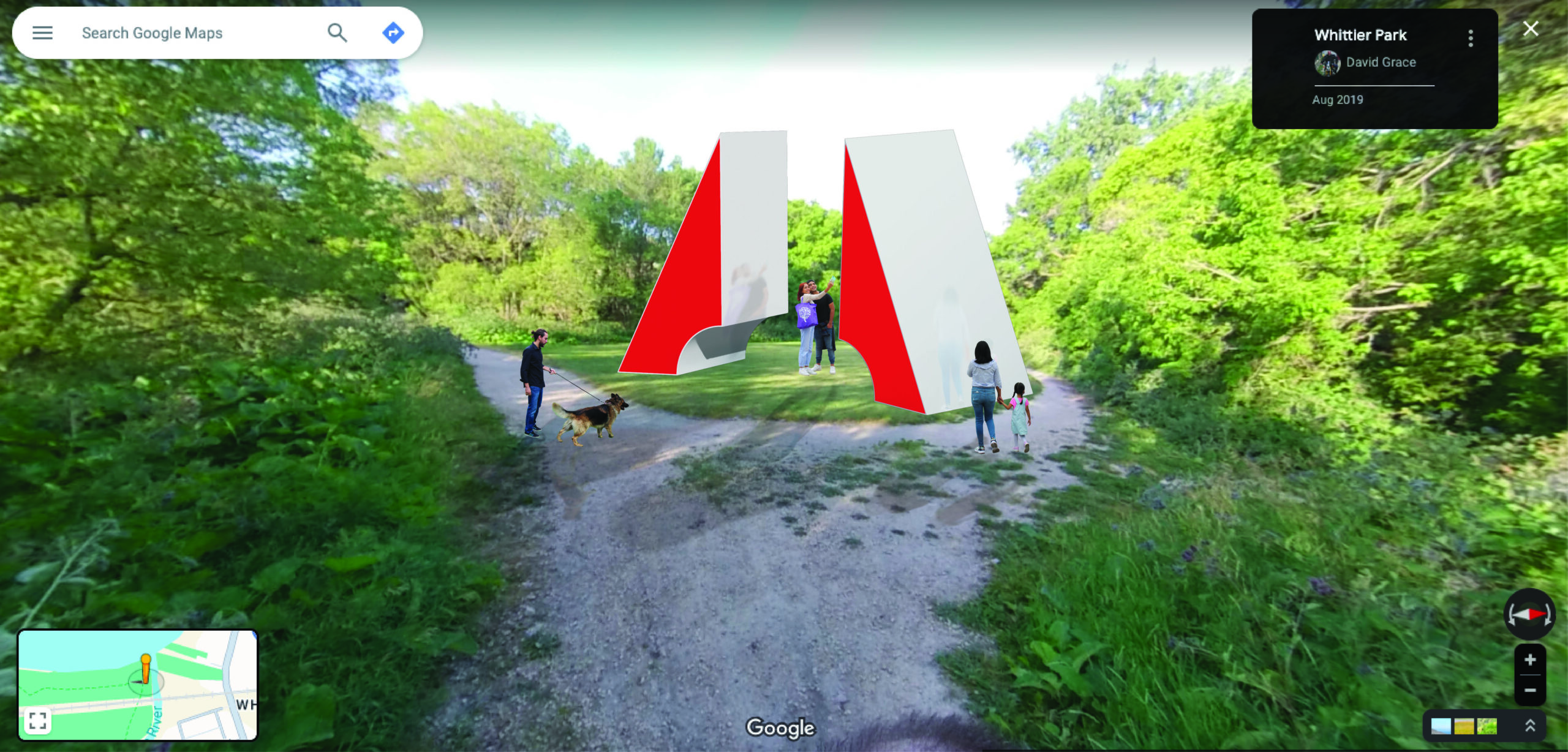
Rendering by Hamideh Behgar as part of the 2024 CreateSpace Public Art Forum
Photo credit: Hamideh Behgar
Request for proposals (RFP): A Call to Artists as a part of a single stage competition process that is usually associated with projects with smaller budgets. These calls invite applying artists to submit an application that includes images of the proposed artwork, a description, budget, curriculum vitae, and portfolio. A selection committee reviews the submissions. A fee is generally not provided to the artists for the development of their proposal. RFPs are useful in providing opportunities to emerging artists whose technical/creative capacities may not be evident through qualifications only.
Request for qualifications (RFQ): A Request for Qualifications (like an Expression of Interest) is a Call to Artists that usually consists of a two-stage competition process. In the first stage, applying artists are invited to submit some or all of the following for the selection panel’s consideration: a letter of intent, curriculum vitae (CV), and examples of previous work or a portfolio. A selection panel then shortlists a set number of artists who are invited to create proposals and are generally provided a fee for this work. The selection panel will then select a winning artist to award the contract to.
Revitalization: According to the Metropolitan Area Planning Council, “Efforts to transform urban areas to reverse deterioration of the physical environment and increase access to services and amenities such as reliable transit, usable open space and high quality food, education, and employment.”
(S) Public art terms
Selection committee: A group of individuals (in this instance, artists and creatives) granted the responsibility of selecting a person(s) for an opportunity based on a specific set of criteria.
Site-specific artworks: Artworks that are designed for a specific location or site, taking into account the characteristics of the site itself in the design of the artwork. The meaning of these artworks is tied to the site they are located in.
Stakeholder: An individual or organization that is impacted by an activity or policy and may be involved in the decision-making process of that activity or policy.
Standalone artworks: Artworks such as sculptures, statues, and structures that stand separately from a wall or other part of a building.
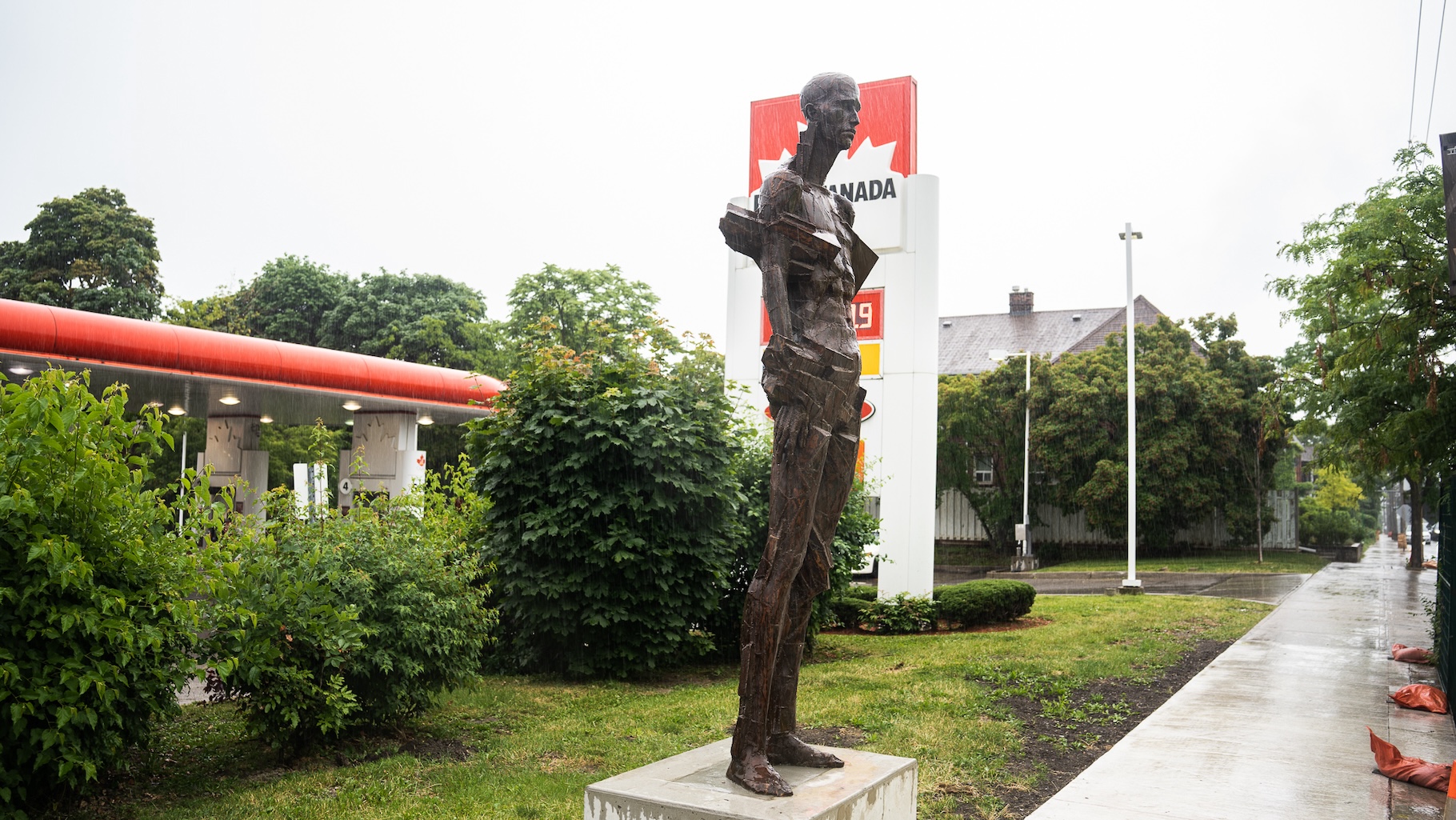
All I Have by Soheyl Bastami as part of the Eglinton Way BIA Public Art Competition
Photo credit: Alicia Reid
Statement of interest (or letter of intent): A short narrative, included in submissions to Calls for Artists, that explains why the applying artist would be well suited for the project. These letters can also highlight the artists’ specific interests or connections to the project.
(T) Public art terms
Terms of reference (TOR): A Terms of Reference document is created to guide artists in the creation of their proposals for a project. TORs often include detailed information about the project, the site, design considerations, the selection process, etc.
Two-stage competition process: A two-stage competition process is a Call for Artists that takes place in two stages. In the first stage, a selection panel will shortlist a set number of artists based on their Expressions Of Interest or Requests For Qualifications submissions. These shortlisted artists are generally chosen based on their previous artistic excellence, interest in the project/site, and samples of their past work. In the second stage, shortlisted artists are usually paid a small fee to develop specific proposals for the project. The selection panel then selects one or more of the shortlisted artists who are awarded the project and enter into a contract with the awarding party.
(U) Public art terms
Unveiling: A community-based program to reveal a finished artwork to the community intended to deepen project impact and expand audiences while acknowledging community participants and partnerships.
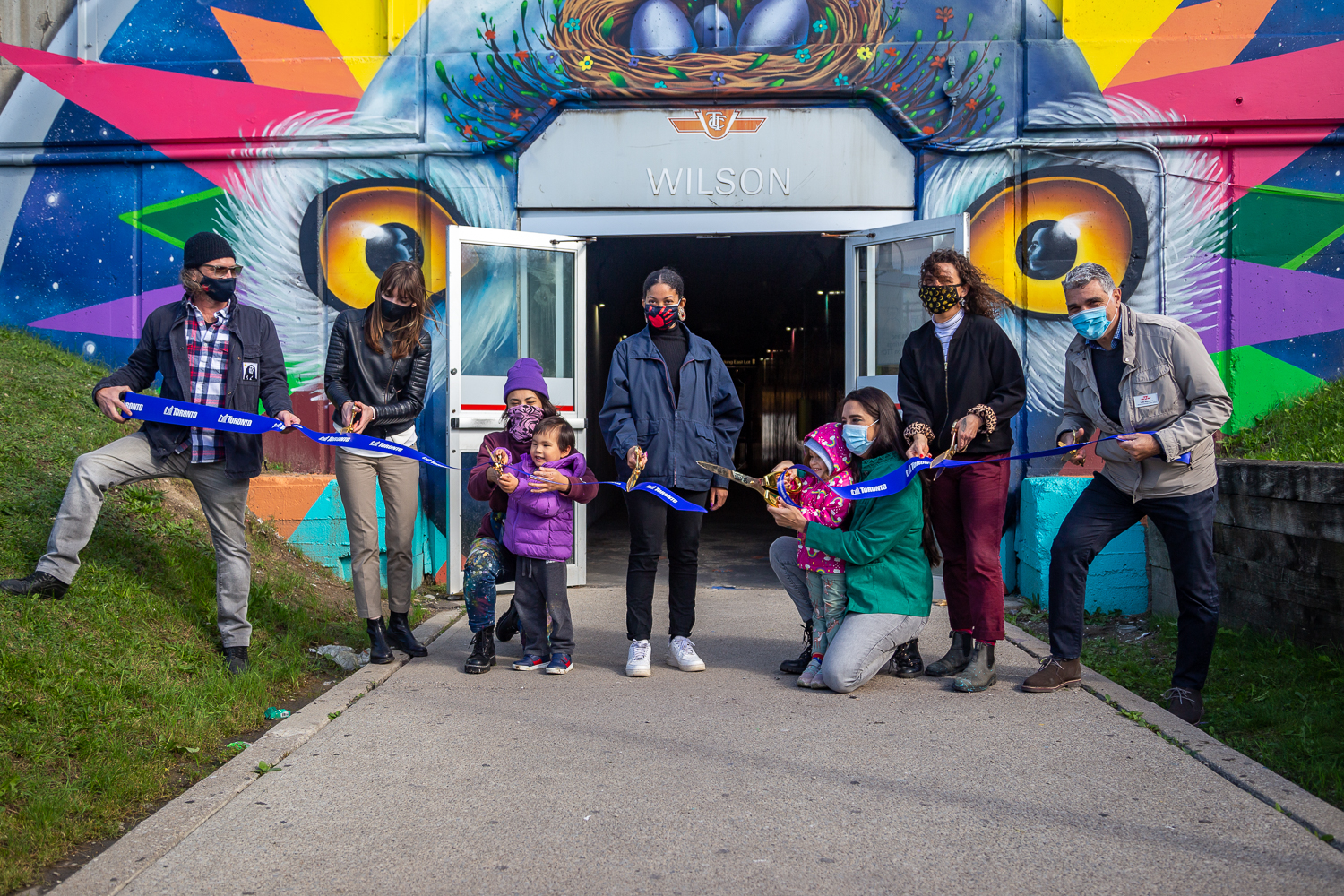
Celebratory unveiling of the Daily Migration mural by Shalak Attack and artist assistants with the participation of community member through arts-based workshops
Photo credit: Mila Bright Zlatanovic
(V) Public art terms
(W) Public art terms
Wayfinding: Artwork designed to assist visitors in navigating a space. Imagery, colour, and signage are intended to help visitors to find important locations and orient themselves in the space.
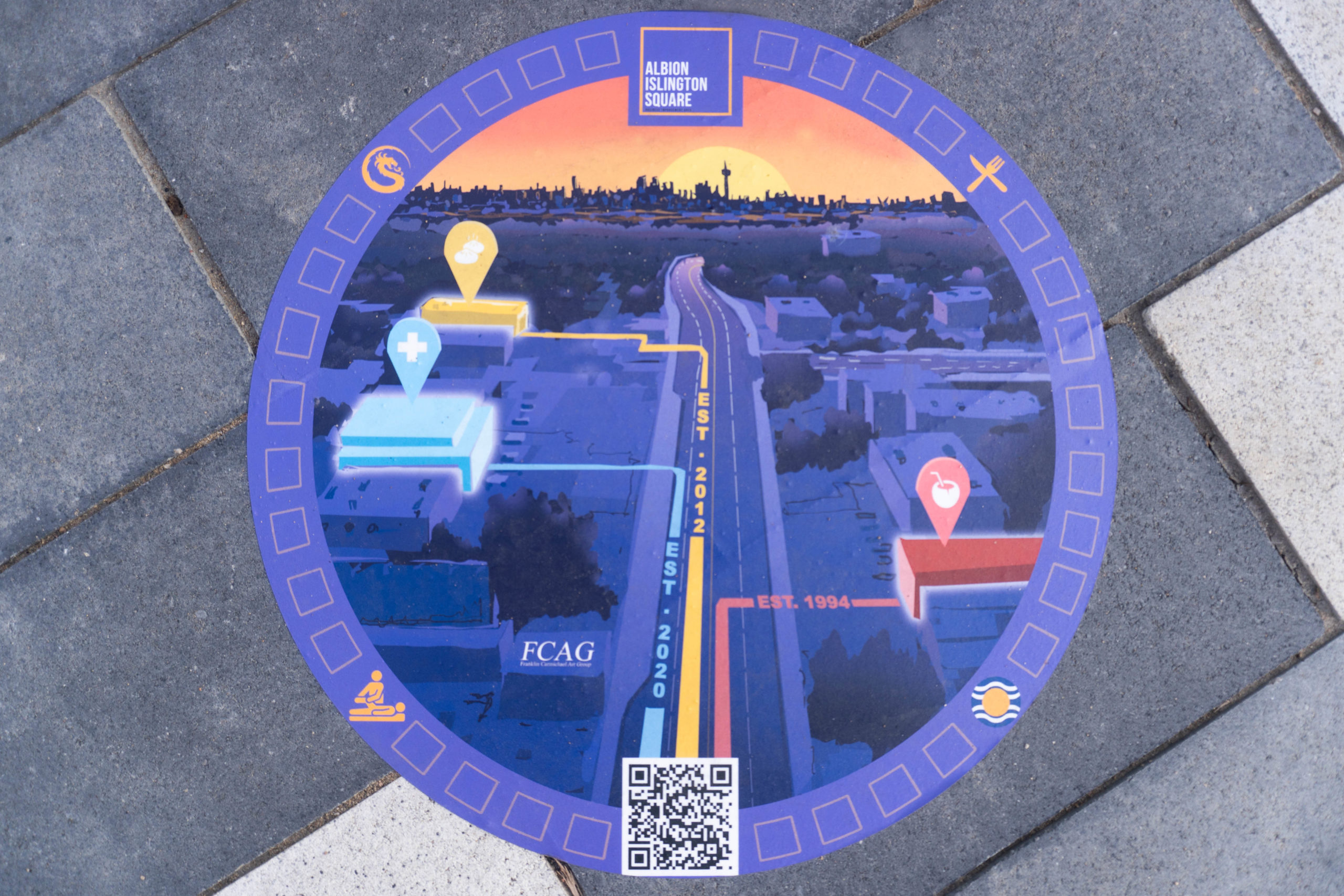
Wayfinding ground decals for Albion Islington Square BIA by Karun Ramani as part of I HeART Main Street
Photo credit: May Shi
(X) Public art terms
(Y) Public art terms
(Z) Public art terms
Stumble across other public art terms that should be included on this list? Contact us to let us know.
This feature is part of Fieldnotes, a public art blog series by STEPS that promotes inclusive and innovative public art through interviews, storytelling, case studies, and knowledge sharing.
Have a story to pitch or an exciting idea on how we can work together on a Fieldnotes feature? Contact us to get the conversation started.

